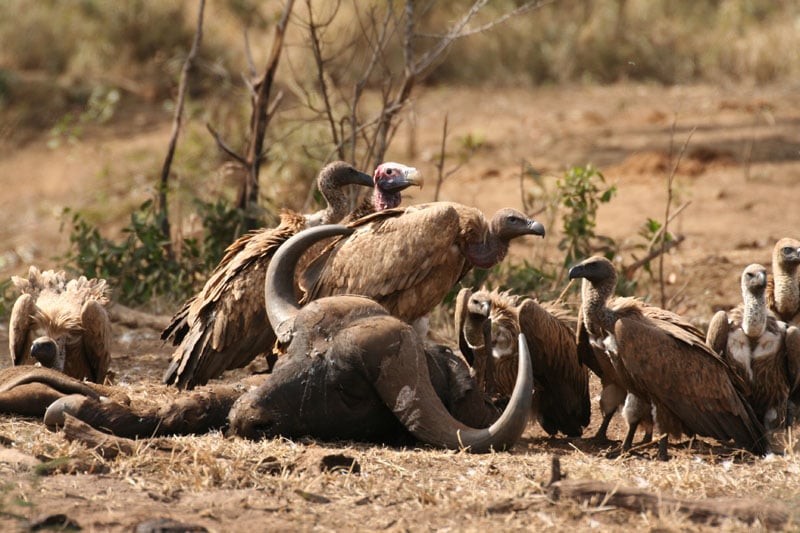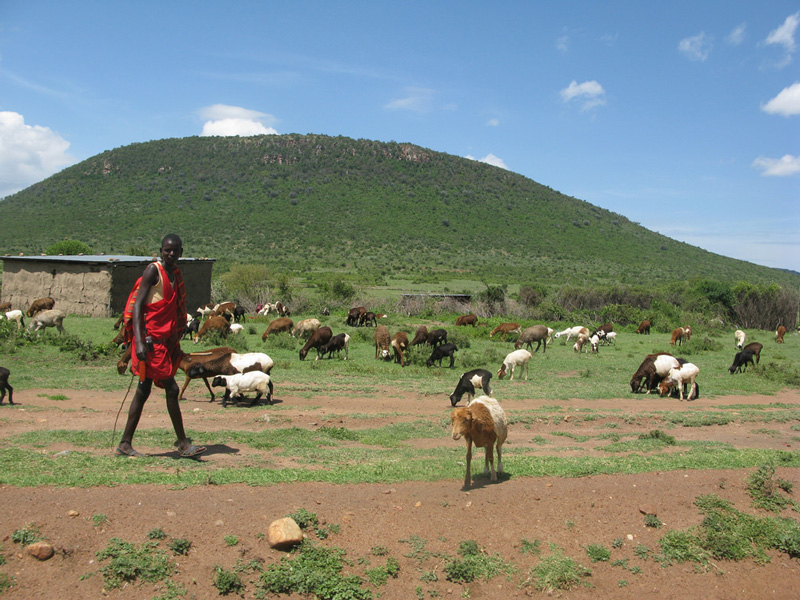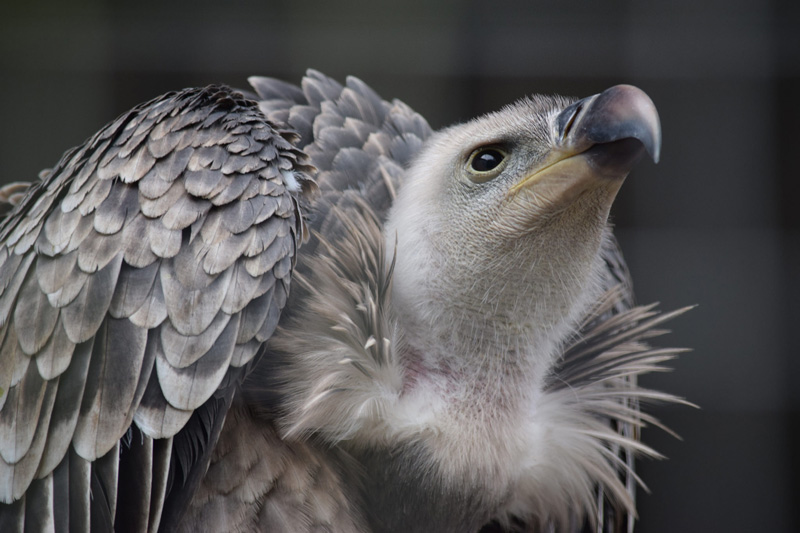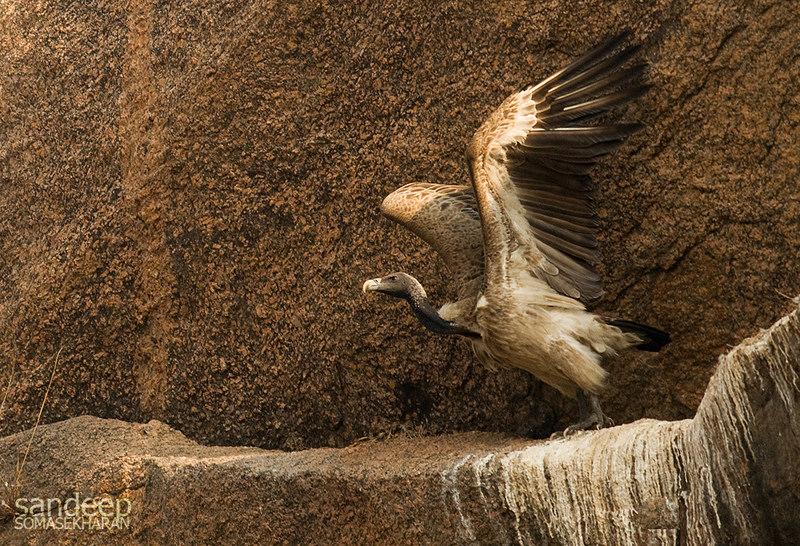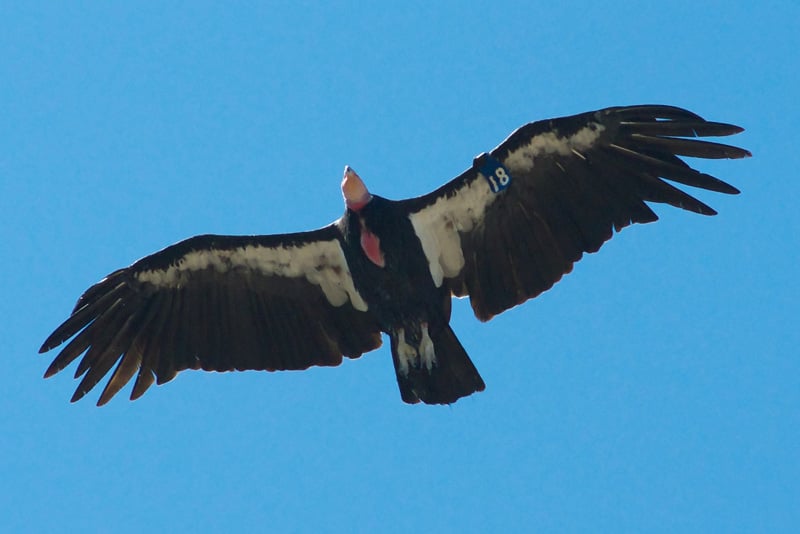World wide, many vulture populations are in trouble, yet they are one of the most essential birds. According to the National Geographic article, Bloody Good (2016), of the 23 species of vultures, only 7 are listed as least concern. Four are near threatened, three are endangered, and nine are critically endangered, including the California Condor. So why should we care? Without them, rotting carcasses could linger longer, undesirable insect populations would increase, and diseases would spread to people, livestock, and other wild animals.
Furadan
In many areas poisoning, whether accidental or on purpose, is causing drastic declines in vulture populations. An estimated 61 percent of vulture deaths in Africa are due to poisoning. In Kenya, lions prey on the cattle of the Maasai. To combat this problem, the Maasai sprinkle what is left of the cattle carcasses with a generic form of Furadan, a carbofuran, which is a strong, fast acting pesticide. Lions returning to feed die from the Furadan. Vultures in turn are poisoned by the Furadan, as they make meals of both the cattle carcasses and the dead lions.
Farming is also contributing to the Furadan poisoning of vultures in Africa. Many African farmers use this highly toxic pesticide to protect crops and livestock. Although vultures have strong stomach acids that can kill terrible diseases, they are not immune to Furadan. Vultures may feed in huge groups of 100 or more birds, and if feeding on any carcass containing Furadan, they will all die together.
Poachers
Poachers are one of the largest threats to vultures in Africa. In this case the vultures are deliberately poisoned. When poachers kill an animal within a National Park, such as an elephant for its ivory, or a rhinoceros for its horn, vultures will appear circling and descending in large groups, thereby alerting game wardens to the poachers kill. According to a New York Time’s article, a vulture can spot a dead elephant in less than 30 minutes, but it can take a poacher more than an hour to cut off the ivory tusks. In the hopes of eliminating these early warnings, poachers sprinkle poison on the remaining carcasses to purposely kill vultures.
Traditional Healing
Another lesser, though still important, problem occurring in Africa is that vultures are killed intentionally for use in traditional healing. It is believed that the feet and heads will cure many illnesses. It is also thought that vulture parts will bring good luck and impart speed, strength, and endurance to those who ingest them. The heads are said to allow one to see into the future.
A Future Worry
A new worry for vultures is the huge proposed wind farm to be constructed across a major migratory flight path for birds in Kenya. The critically endangered Ruppell’s Vulture will be highly impacted. Though it may appear that windmills are turning slowly, the blades actually reach speeds over 200 mph, which can easily slice a bird into pieces.
Diclofenac
In India, 96% of some vulture species have perished in the last 10 years. Much of this has been linked to vultures feeding on carcasses of cattle that had been treated with the anti-inflammatory diclofenac. Although diclofenac relieves pain in cattle, it causes kidney failure in vultures that consume the meat after the cattle die. Since most Indians don’t eat beef, vultures are important to the culture as they clean up the carcasses of dead cattle. With the massive decline of vultures, carcasses began to pile up. This in turn caused the feral dog population to increase to 7 million over an 11 year period. The side effect of this was an increase in the number of people bitten by feral dogs with rabies, causing the death of thousands of people.
Unfortunately, despite knowing the problems diclofenac causes, many countries still use the banned drug, including Saudi Arabia and European countries such as Italy and Spain which are also home to many of India’s vultures during part of the year.
The loss of vultures in Mumbai has caused the Parsi community a problem with their traditional “Sky Burials.” The Parsi believe burying or cremating the dead pollutes nature. In their “Sky Burials,” the bodies of their loved ones are placed on elevated stone platforms to be eaten by vultures. In this way their souls can be liberated, allowing them to reach heaven. Without the vultures, the bodies take months to disappear.
Lead
In the United States the largest threat to the critically endanger California Condor is lead poisoning, caused by ammunition fragments in gut piles and carcasses left behind by hunters. Any vulture or other animal that feeds on carrion containing lead fragments is in danger of lead poisoning. Condors and eagles are particularly susceptible to this, and many die a slow, painful death. This can be avoided by using non-lead ammunition. Lead poisoning doesn’t just happen here in the US. A study in southern Africa concluded that about 25 percent of the White-backed Vultures tested had high levels of lead in their blood.
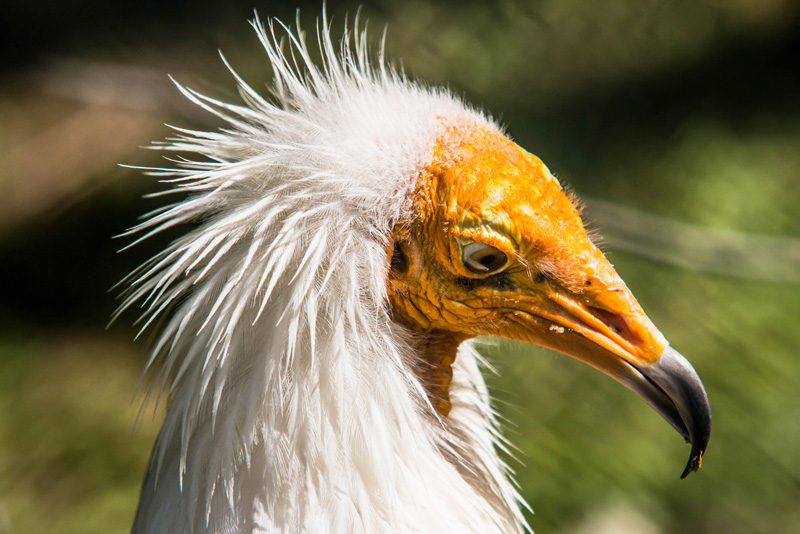
Vultures are so important to humanity that the world can not afford to loose them. In my next blog, I will discuss methods for saving them.
If you are interested in further reading on this topic visit the links listed below.
WVU Researchers Ask: Are Lead Poisoned Vultures the New Canary in a Coal Mine? http://wvpublic.org/post/wvu-researchers-ask-are-lead-poisoned-vultures-new-canary-coal-mine#stream/0
Egyptian Vulture http://www.arkive.org/egyptian-vulture/neophron-percnopterus/
Vultures in Saudi-Arabia http://www.birdlife.org/middle-east/news/saving-vultures-saudi-arabia
Cattle Drug Threatens Thousands of Vultures http://www.nature.com/news/cattle-drug-threatens-thousands-of-vultures-1.19839
Photo Credits:
Vultures feeding by Johann du Preeze, Attribution-NonCommercial-NoDerivs License, https://www.flickr.com/photos/jo_mur
White-headed Vulture by Philippe DESMEURE, Attribution-NoDerivs License, https://www.flickr.com/photos/phmoa
India’s Long Billed Vulture by Sandeep Somasekharan, NonCommercial, NoDerivatives, Attribution License https://www.flickr.com/photos/sandyclix/
Elephant ivory seized from poachers in Garamba by ENOUGH Project, Attribution-NonCommercial-NoDerivs License, https://www.flickr.com/photos/enoughproject/
Ruppell’s Griffon Vulture by jambox998, Attribution-NonCommercial-NoDerivs License, https://www.flickr.com/photos/47676646@N08/
California Condor by Brian Sims, Attribution license, https://www.flickr.com/photos/briansims/
Egyptian Vulture by Jutta M. Jenning, Attribution-NonCommercial-NoDerivs License, https://www.flickr.com/photos/mjpicsde/

